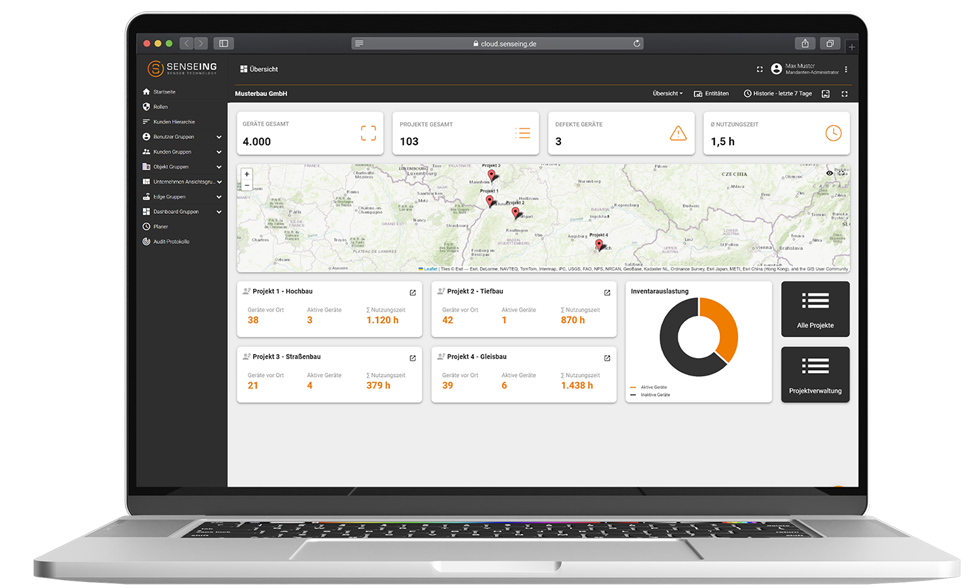IoT architecture: The layers of the Internet of Things
An introduction to the different layers of IoT architecture and how they work together to connect the physical world with the digital world.
The Internet of Things The Internet of Things (IoT) is a technology that makes it possible to connect objects in an unprecedented way. The data collected as a result enables us to make better decisions or automate processes. However, the IoT is not a single technology, but many technological layers that interact to form the Internet of Things. In this article you will learn more about the architecture of the IoT and its different layers.
The layers of the IoT architecture
The Internet of Things is multifaceted and comprises a number of components and technologies that work together to enable the networking of objects. We roughly distinguish between layers in the physical world and layers in the digital world. In between there is a connectivity layer that connects the two worlds. In the following, we will go into more detail about the levels and the associated components and technologies.
Physical world
In most cases, additional hardware is needed to network an object and thus integrate it into the Internet of Things. This hardware is attached to the object in order to network the physical world, i.e. all real objects.
Physical objects
At the beginning there is always an object to be networked. In the industrial context, this is usually vehicles, transport containers, devices and tools, production machines or conveyor belts. Networking these objects enables better monitoring and control of processes as well as optimised maintenance and servicing.
Sensors and actuators
In order to collect data from a physical object or its environment, sensors are required, which are either attached to the objects in the form of trackers, data loggers or beacons or are already in the electronics of an object. Depending on the requirements, the sensors can record various physical parameters, from temperature and humidity to movement and vibration.
Actuators are components that trigger actions, i.e. control objects, on the basis of recorded data. The actuators can take on different forms depending on requirements. For example, they can be used as a switch for activating the air conditioning at a higher temperature or as a motor that closes windows when it rains.
Connectivity
The connectivity layer is the layer that networks the devices with each other or connects them to the internet to transmit the data. Depending on the application, various network protocols such as WiFi, Bluetooth , NB-IoT or LoRaWAN is used. The aim of this level is to connect the physical with the digital world and to ensure reliable as well as secure data transmission. Some solutions have the option of sending data via the mobile network themselves. Other solutions use intermediate instances such as smartphones or gateways for this purpose.
Digital world
The digital world of the IoT architecture enables the processing and analysis of the collected data. This enables companies to gain useful insights and derive measures from them, which in turn optimises processes, saves costs or identifies new business areas.
Analytics
Analytics or data analysis is an important part of the IoT. This is because useful insights and valuable data are extracted from the large amounts of data. These insights are then used to make decisions or predict trends.
In order to use analytics successfully, the data is first collected, stored and cleaned in a data store. Then, algorithms and methods from the field of machine learning and artificial intelligence are used to identify the maintenance needs of machines or predict failures, for example.
Digital services
The final level of digital services brings together the possibilities of the previous levels, structures them and presents them in so-called IoT platforms. The data is usually presented in clear dashboards in web applications or apps. This is where the actual customer benefit is generated. This is where the customer gets a complete overview of his networked objects. For example, the locations of vehicles are visualised here, machines are controlled remotely or data is visualised in order to recognise trends and patterns. This information can then be used to optimise the processes concerned, develop new products and services and ultimately make better decisions.

The IoT architecture - complex and critical to success
The Internet of Things is an exciting field that offers many opportunities to automate processes and make decisions based on real-time data. However, the IoT architecture with its various technologies and components makes the Internet of Things a complex ecosystem. Since only a few companies have the necessary expertise, cooperation with an experienced IoT partner and careful planning and coordination are essential for a successful implementation.


